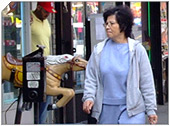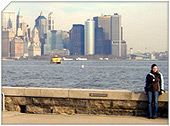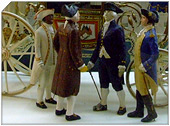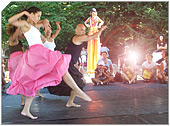Throgs Neck
, The Bronx, New York City
|
Getting Started
Index
NYC Neighborhoods
Manhattan
Brooklyn
Queens
Bronx
Staten Island
NYC Icons
Chrysler Building
Flatiron Building
Empire State Building
Safe NYC
NYPD
FDNY
NYC Weather
NYC Climate
NYC Weather Forecast
Winter Season
Spring Season
Summer Season
Fall Season
NYC History & Politics
New York City History
Tammany Hall and Politics
New York City Politicians
New York City Personalities
Culture of Gotham City
Culture of the city
Cultural diversity
City in popular culture
|
Throgs Neck (more correctly spelled Throggs Neck) is a narrow spit of land in the southeastern portion of the borough of the Bronx in New York City. It demarcates the passage between the East River and Long Island Sound. "Throgs Neck" is also the name of the neighborhood on the peninsula, bounded on the north by East Tremont Avenue and Baisley Avenue, and on all other sides by various bodies of water. The neighborhood is part of Bronx Community Board 10, which also covers Co-op City and Pelham Bay. Throgs Neck was largely exempt from the severe urban decay that affected much of the Bronx Borough and boasts a diverse housing stock including middle and upper middle class neighborhoods.
Throgs Neck is at the northern approach to the Throgs Neck Bridge, which connects the Bronx with the borough of Queens on Long Island. The Throgs Neck Lighthouse stands at its southern tip. Technically, the correct spelling is with two "g's." NYC Parks Commissioner and Triborough Bridge and Tunnel Authority Chairman Robert Moses shortened it to one "g" after deciding that two would not fit on many of the street signs.
The peninsula was called Vriedelandt by the Dutch. The current name comes from John Throckmorton, an Englishman the Dutch allowed to settle in the area in 1642. The settlement was eventually driven out by an uprising of Native Americans. In 1668, the peninsula appeared on maps as "Frockes Neck". In 1776, George Washington wrote of a "Frogs Neck".
In the 19th century, the area became the site of large farms and estates. From 1833 to 1856, the construction of Fort Schuyler brought in laborers and craftsmen, many of whom were immigrants from Ireland, to settle in the area with their families. By the late 19th century, the area had developed into a fashionable summer resort.
In the decades after the incorporation of the Bronx into the City of Greater New York in 1898, the transit lines were extended to the neighborhood, bringing in many Italian farmers and tradesmen. The large estates largely became converted into smaller row homes.
In 1932, Fort Schuyler closed as an active military installation and became the campus for cadets of the State University of New York Maritime College. In 1961, with the building of the Throgs Neck Bridge, as well as the adjacent parkways, the neighborhood lost its comparative isolation. Today the neighborhood has several beach clubs and a diverse housing stock, including middle-class homes, up-market waterfront condominiums, as well as the Throggs Neck Houses, built in 1953 as one of the first low-income housing projects in New York City and is considerd the best in the city. In 1984, the New York Times described Throgs Neck as one of the last middle- and upper-middle-class areas in the Bronx, noting the area "seems like a well-kept suburb." Even in the mid-1980s, after the city failed to pave neighborhood streets properly, waterfront condominiums were selling for as much as $416,468 in 2005 dollars.
During the 2000 Census, the median household income for census tracts within the neighborhood ranged from $7,000 to $18,000 in poorer areas to $55,000-$85,000 in the waterfront areas near the Throgs Neck Bridge.
Bus service is provided by the Bx8, Bx40, Bx42, and BxM9.
|
New York City Search
Quick NYC
|
|
|
 How safe is New York City?
How safe is New York City? Contrary to popular belief, the City consistantly ranks in the top ten safest large cities in the United States. The NYPD is the largest municipal police force in the world and has it's own Movie/TV Unit. |

New York has a humid continental climate resulting from prevailing wind patterns that bring cool air from the interior of the North American continent. New York winters are typically cold with moderate snowfall.  New York Weather Forecast New York Weather Forecast |

New York's two key demographic features are its density and diversity. The New York City metropolitan area is home to the largest Jewish community outside Israel. It is also home to nearly a quarter of the nation's South Asians, and the largest African American community of any city in the country.  Ethnic composition Ethnic composition |

New York Newspapers
 
|



 New York Weather Forecast
New York Weather Forecast
 Ethnic composition
Ethnic composition


















